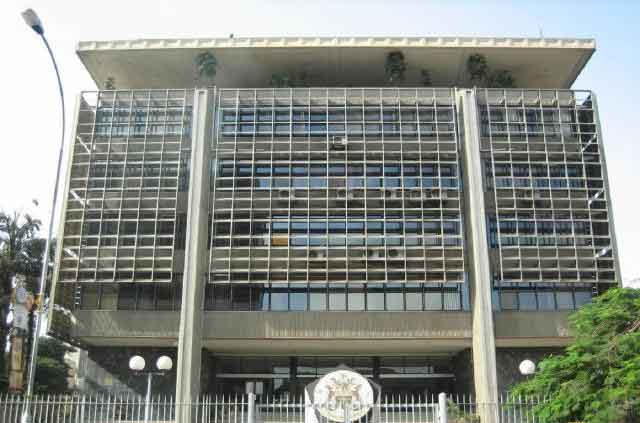
Government executives fail to provide viable options to lower interest rates as experts propose initiatives
Kampala, Uganda | JULIUS BUSINGE | Uganda government’s over-reliance on borrowing from the local market is the main reason behind the high interest rates. This was the general assessment that stakeholders during a seminar held at the Kampala Serena Hotel between the Private Sector Foundation Uganda, Bank of Uganda and the Ministry of Finance executives on Nov.30 fronted.
Gideon Badagawa, the executive director at the Private Sector Foundation Uganda (PSFU) said the government’s continued borrowing locally to finance its budget has squeezed out businesses from the credit market.
“We all know government is a risk free borrower and offers up to 15% interest per year…this causes competition and crowding out the private sector,” Badagawa said.
The same point was echoed by Adam Mugume, the executive director in charge of research at Bank of Uganda.
Mugume said as longer as the government through the ministry of finance continues to raise revenue through domestic borrowing to finance its fiscal plans, interest rates will remain high.
Bank of Uganda has previously hinted on the idea of regulating interest rates as commercial banks continue to charge high rates even when the policy interest rate – the Central Bank Rate is cut. Even when they (banks) post profits, executives say, the cost of doing business largely determines levels of interest rates.
Currently, commercial bank average lending rate stands at 20% per annum with some clients reportedly accessing credit at over 30% [interest rate] or more depending on their risk profile, cash flow and business plans.
But Moses Kaggwa, a commissioner at the Ministry of Finance said once the government borrows locally, the impact of that to interest rates is known but does not entirely crash borrowers from all sectors.
He said for the economy to operate well, government has to raise money from different sources and put in place a working environment in the form of roads, power dams/electricity generation and more.
Experts at the seminar were in agreement that high interest rates fail economic growth. This could even be worse given the need for initiatives to fuel the economy that has been hit by COVID-19 sock.
In their separate presentations, operating costs, profitability, provision for bad debts, opportunity cost of holding reserves and taxes were all cited as contributing factors to the high interest rate spreads.
Rashmi Pillai, the executive director at Financial Sector Deepening Uganda said banks are financial intermediaries for savers, depositors and borrowers, and that they typically use deposits to lend to borrowers for productive investment or consumption to drive economic growth.
Pillai said there are costs to intermediation that has to be managed so as to influence the downward movement of interest rates.
She said that high interest spreads could also be driven by high operational and administrative costs.
She cites the high cost to income ratio for Ugandan banks between 50% and 60%, which, she said, drives the costs of lending upwards.
Interest rates reduction measures
In a joint presentation, economic experts including Keith Jefferis, Elizabeth Kasekende, Doreen Rubatsimbira and Nicole Ntungire, sponsored by International Growth Centre (IGC) offered some solutions to the interest rate question.
The quartet said encouraging bank competition would help reduce interest rate spreads.
“Encouraging growth of smaller/medium sized banks to challenge the dominant large players would also bring down rates,” they said calling for consolidation of smaller banks perhaps by increasing minimum capital requirements, reduction in overhead costs and continued transition to electronic platforms from branch based banking to reap from the economies of scale.
The experts called for re-examination on whether regulatory requirements add unnecessary costs such as registering collateral as security for loans was behind the high interest rates.
The experts said a reduction in non-performing loans through better credit risk assessment could also narrow the gap between lending and deposit rates.
Reduction of government domestic borrowing could lead to lower real treasury bills and bond rates, thus reducing interest rate spreads, they added.
They also suggested encouraging competition from non-bank lenders such as mobile money operators, a step that could drive the costs of lending downwards.
****
 The Independent Uganda: You get the Truth we Pay the Price
The Independent Uganda: You get the Truth we Pay the Price


